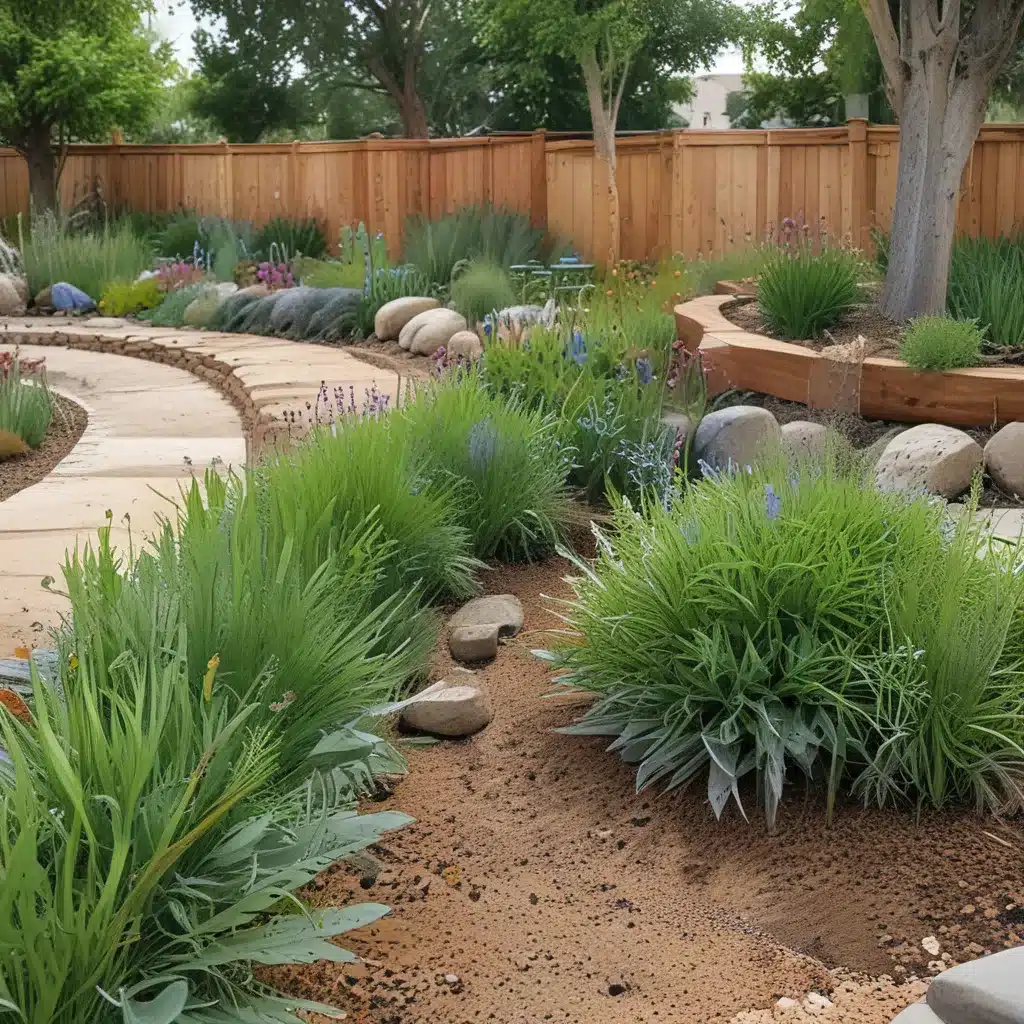A Rainy Day Dream Come True
I have a confession to make: I’m a little obsessed with rain gardens. Not in a creepy, stalker-ish kind of way, but in a “this is the coolest and most practical landscaping feature I’ve ever encountered” kind of way. And as the design consultant for A1 Landscape Construction in Temecula, California, I get to indulge this passion on a regular basis.
You see, rain gardens are like the superhero sidekicks of the landscaping world. They may not get all the glory, but they work tirelessly behind the scenes to protect our precious water resources and create beautiful, sustainable outdoor spaces. And the best part? They’re easy to incorporate into any landscape, no matter the size or style.
The Power of Passive Rainwater Harvesting
I’ll never forget the first time I saw a rain garden in action. It was during a water-wise landscaping workshop in Napa, California, where the experts from the California Native Plant Society and the Napa County Resource Conservation District were showcasing the magic of these functional yet visually stunning features.
As the rain poured down, I watched in amazement as the garden eagerly soaked up the runoff, channeling it into a series of gently sloping depressions filled with native plants and nutrient-rich soil. It was like Mother Nature’s way of saying, “I’ll take it from here, thanks.”
From that moment on, I knew I had to bring the power of rain gardens to my clients in Temecula. And let me tell you, the results have been nothing short of transformative.
Designing for a Drier Future
In a state like California, where water conservation is a way of life, rain gardens are more than just a pretty face. They’re a vital tool in the fight against drought and climate change. By capturing and infiltrating stormwater runoff, these landscaping features help recharge groundwater supplies, reduce the risk of flooding, and filter out pollutants before they reach our waterways.
But don’t just take my word for it. As the experts at the Water-Wise Garden in Eugene, Oregon will tell you, rain gardens are a key component of any water-efficient landscape. By grouping plants with similar water needs and incorporating smart irrigation systems, they’ve created a lush, low-maintenance oasis that showcases the beauty of sustainable design.
Bringing Rain Gardens to Life
Of course, designing and installing a rain garden isn’t as simple as digging a hole and throwing in a few plants. There’s a bit more to it than that. But don’t worry, I’ve got your back.
The first step is to choose the right location. Ideally, you want to site your rain garden in an area that collects runoff from roofs, driveways, or other impervious surfaces. This ensures that the garden will have a steady supply of water to work with.
Next, it’s time to get your hands dirty (literally). You’ll need to excavate a shallow depression, usually around 6-12 inches deep, and amend the soil with compost or other organic matter to improve drainage and water-holding capacity. From there, it’s just a matter of selecting the right plants – native species that can thrive in both wet and dry conditions – and arranging them in a visually appealing way.
And let’s not forget the final touch: a little bit of whimsy. As the experts from Resource Central will tell you, rain gardens aren’t just functional – they’re a chance to get creative and inject some personality into your landscape. So don’t be afraid to mix in a few unexpected elements, like a whimsical sculpture or a meandering path.
The Rain Garden Trifecta
Now, I know what you’re thinking: “That all sounds great, but how do I know if a rain garden is right for my property?” Well, my friends, let me introduce you to the rain garden trifecta: water conservation, pollution prevention, and wildlife habitat.
Water Conservation: By capturing and infiltrating stormwater runoff, rain gardens reduce the demand on our precious water resources, both for irrigation and for the larger water supply. And with the help of smart irrigation systems and drought-tolerant plants, they can significantly reduce your outdoor water use.
Pollution Prevention: Those pesky pollutants I mentioned earlier? Rain gardens are experts at intercepting them before they can reach our streams, rivers, and oceans. They filter out everything from heavy metals and pesticides to pet waste and automotive fluids, keeping our waterways clean and healthy.
Wildlife Habitat: Rain gardens don’t just benefit us humans – they also provide a valuable oasis for local wildlife. By incorporating native plants, these landscaping features can attract a diverse array of beneficial insects, birds, and other critters, helping to support local biodiversity.
So, whether you’re looking to save water, protect the environment, or simply create a beautiful and sustainable outdoor space, a rain garden might just be the solution you’ve been dreaming of.
Putting it All Together
Convinced yet? I hope so, because I can’t wait to help you bring your very own rain garden to life. Just imagine it: a lush, vibrant oasis that not only quenches your thirst for beautiful landscaping, but also does its part to conserve our precious water resources and support the local ecosystem.
It’s a win-win-win, and I’m confident that the team at A1 Landscape Construction has the expertise and passion to make it happen. So what are you waiting for? Let’s get started on your rain garden journey today!




